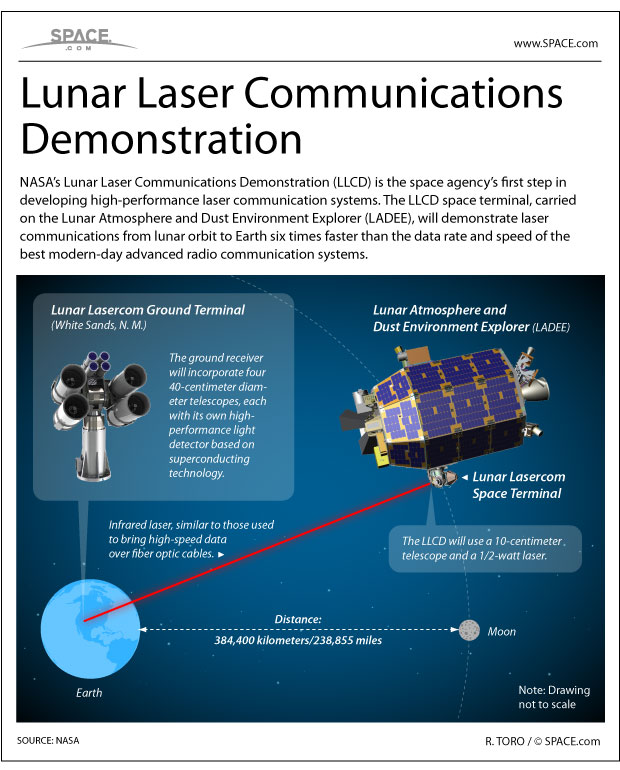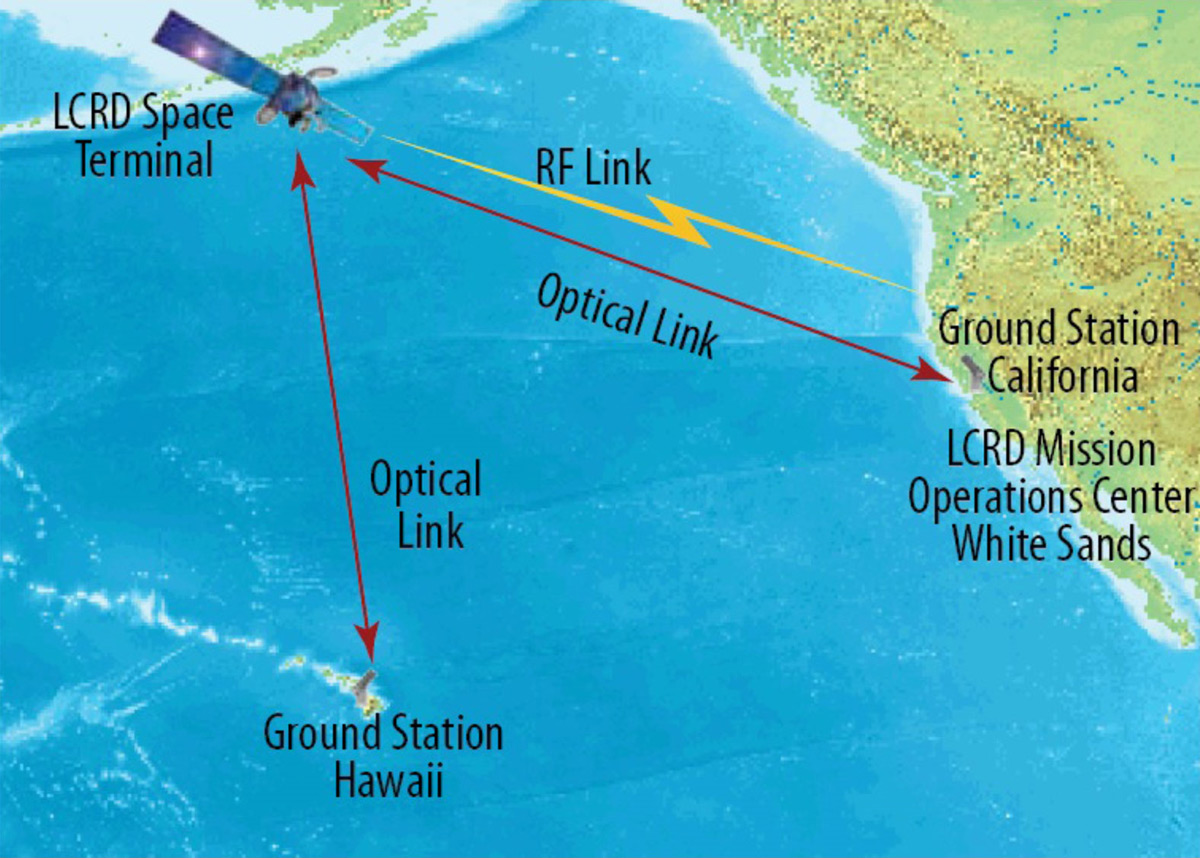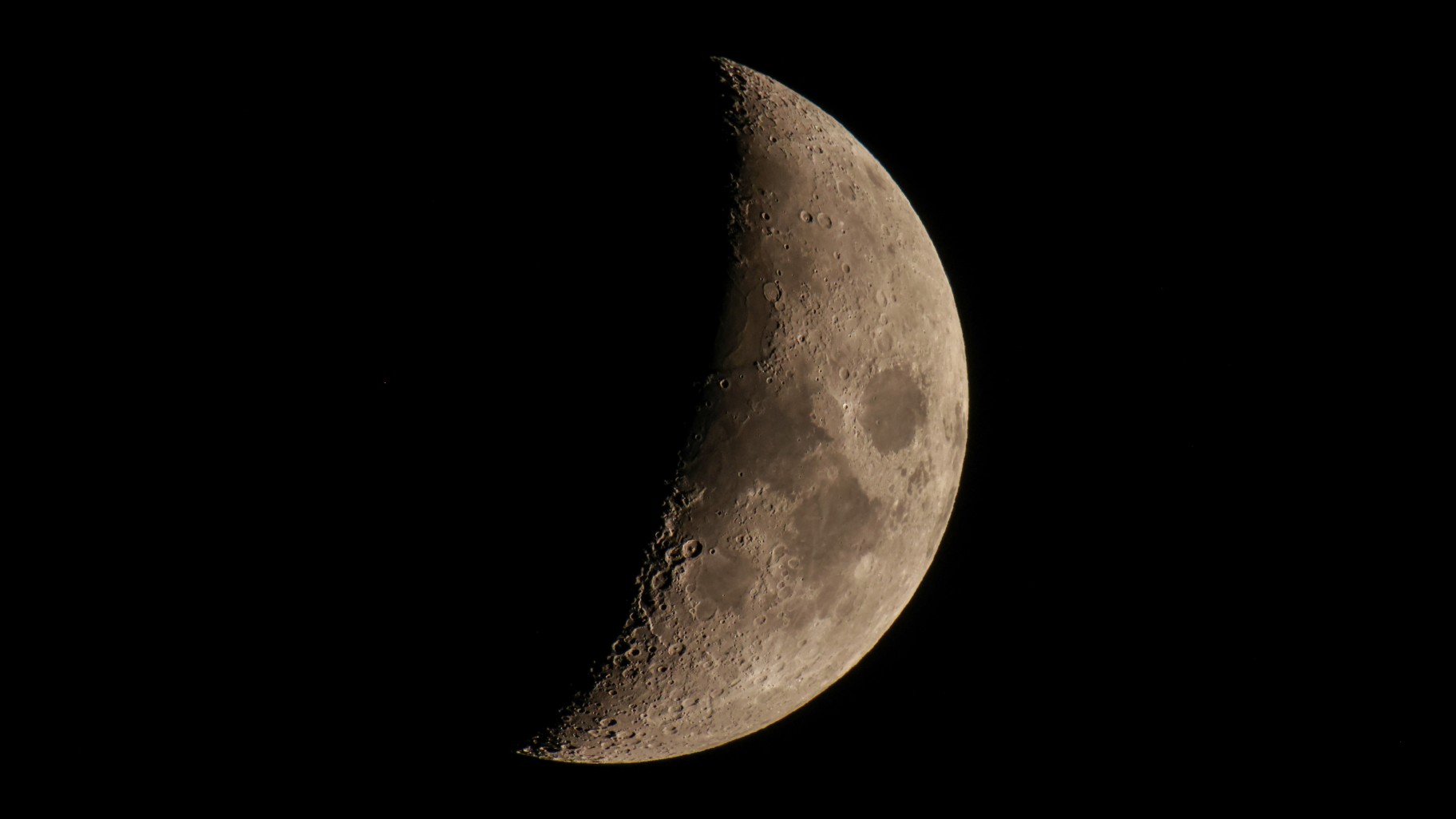
Editor's Note: In this weekly series, SPACE.com explores how technology drives space exploration and discovery.
Since the dawn of the space age, NASA probes have beamed data home to Earth using radio-frequency communication. But that's all set to change soon.
The space agency is working hard to develop laser-based space communications systems, which officials say are key to ensuring rapid and accurate transmission of information from spacecraft around the solar system.
"With missions developing more highly detailed science and larger volumes of data, radio-based communication links can be overwhelmed by the sheer amount of data being pushed to the ground, providing a need for higher data rates that can only be achieved with optical communication," NASA officials wrote in a description of the agency's Laser Communications Relay Demonstration mission (LCRD), which is slated to lift off in December 2017. [Communicating with Deep Space: How it Works (Video)]
Demonstrating laser communications
LCRD will launch to geosynchronous orbit as a hosted payload on a commercial communications satellite developed by the company Space Systems/Loral.
The experiment's two optical modules will use lasers to send information to two ground stations, one in California and one in New Mexico, at rates of up to 1.25 gigabytes per second. LCRD will operate for at least two years, with the aim of demonstrating the long-term viability of a space-based laser communications system.
Breaking space news, the latest updates on rocket launches, skywatching events and more!

LCRD will leverage technology that has already shown its stuff in space. The mission is based heavily on the Lunar Laser Communications Demonstration experiment, or LLCD, which launched to the moon aboard NASA's Lunar Atmosphere and Dust Environment Explorer spacecraft last month.
LLCD has already set a record, using a pulsed laser beam to send data 239,000 miles (384,400 kilometers) from lunar orbit to Earth at a rate of 622 megabits per second. The previous record from the moon had been 150 megabits per second, achieved by NASA's Lunar Reconnaissance Orbiter (LRO), said Bernard Edwards, chief communications systems engineer at the space agency's Goddard Space Flight Center in Greenbelt, Md. [How NASA's Moon Laser Tech Works (Infographic)]
The LLCD system is also more efficient than the radio-frequency approach employed by LRO and other spacecraft, requiring significantly less mass and power, Edwards added.
"So we're really excited about what this means for the future," he said Oct. 23 during a presentation with NASA's Future In-Space Operations working group.

The way forward
NASA officials view LLCD and LCRD as steps toward developing a sort of "high-speed Internet" of space, which would enable probes to transmit data 10 to 100 times faster than they do now.
"Just imagine the ability to transmit huge amounts of data that would take days in a matter of minutes," LLCD manager Don Cornwell said in a statement. "We believe laser-based communications is the next paradigm shift in future space communications."
Such a capability could allow the streaming of live, high-definition video from faraway planets such as Jupiter and Saturn, officials say. And it would be useful closer to home as well, potentially providing the backbone of NASA's next-generation Tracking and Data Relay Satellite network, or TDRS.
TDRS has been helping relay data from NASA spacecraft to the ground since 1983, when the first satellite in the constellation launched to Earth orbit aboard the space shuttle Challenger.
Optical communications could give the system a big upgrade, but the technology needs to be vetted by experiments such as LCRD first, Edwards said.
"NASA is currently conducting a study as to what future TDRS spacecraft should look like, what features they should have, where they might be located, what the overall architecture [should be], things like that," he said. "One of the things that we're trying to do is make sure we dot all the i's and cross t's with regards to understanding what it would take to put an optical comm service on there."
Challenges ahead
While optical communication offers many advantages, the technology poses some challenges as well. One of these is its cost, which remains relatively high at the moment, Edwards said.
"What we're trying to do is to commercialize this to figure out how to drive the cost down," he said. "We have a strategy that we're currently executing that we think will make this affordable in the future."
Another issue is pointing accuracy, since laser beams are very tightly focused. For example, LLCD's beam covers just 3.6 miles (6 km) of ground area when it reaches Earth's surface, meaning the system must be lined up fairly precisely with a ground station for data to be received. (This is not much of a concern with radio-frequency communications, which are much more dispersed.)
"As you go farther out into deep space, it becomes more problematic," Edwards said.
Laser systems designed to work beyond the Earth-moon system would have to considerably larger and more powerful, with bigger ground-based receivers to intercept their beams, he added. To help lay the foundation for such technology, NASA hopes to launch an optical-communications demonstration mission to deep space in the relatively near future.
"That work is being undertaken by the Jet Propulsion Laboratory, on something called the Deep Space Optical Terminal," Edwards said. "That's currently in technology development, in concept development. We don't have an actual flight project yet, with a committed funding source and a committed satellite. But we hope to fly something later on in the decade."
Follow Mike Wall on Twitter @michaeldwall and Google+. Follow us @Spacedotcom, Facebook or Google+. Originally published on SPACE.com.
Join our Space Forums to keep talking space on the latest missions, night sky and more! And if you have a news tip, correction or comment, let us know at: community@space.com.

Michael Wall is a Senior Space Writer with Space.com and joined the team in 2010. He primarily covers exoplanets, spaceflight and military space, but has been known to dabble in the space art beat. His book about the search for alien life, "Out There," was published on Nov. 13, 2018. Before becoming a science writer, Michael worked as a herpetologist and wildlife biologist. He has a Ph.D. in evolutionary biology from the University of Sydney, Australia, a bachelor's degree from the University of Arizona, and a graduate certificate in science writing from the University of California, Santa Cruz. To find out what his latest project is, you can follow Michael on Twitter.

